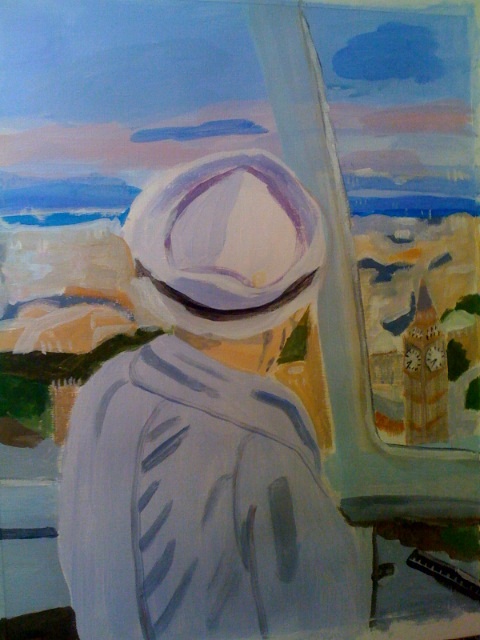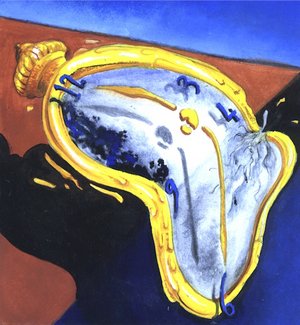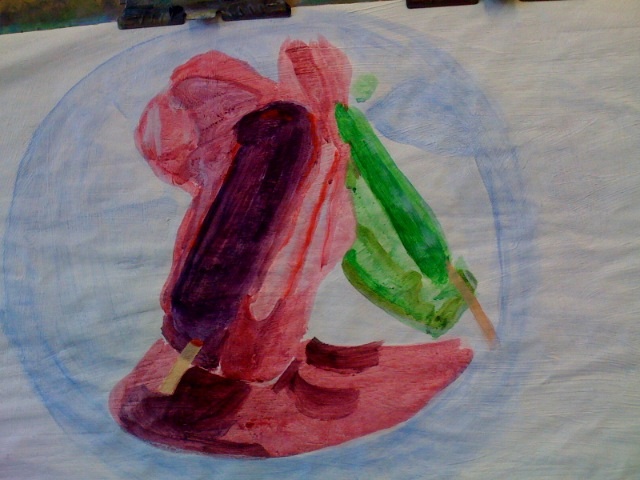

When I began the process of really looking at the photograph to determine which colours were needed, I did not "understand" the shapes that I was seeing, where they fit and whether the colours in the photo were a result of a freak of the camera...but I decided to be slavish to what I was observing, and to create the shapes that I was seeing, in the colour/hue that they presented themselves to my eye.
In other words, I had to TRUST the PROCESS and know that the OUTCOME would be OK. Why is it so hard to TRUST the process, or is it not trusting ourselves?
It wasn't until I had completed the Collage that I realised that the difference in tones on the white keys, were actually a cast shadow of the open piano lid.
In the photo, the colour of the white keys seemed grey and beige. The beige shape was obvious and easy to create. The gray was more difficult. I used a translucent white paper over a gray textured paper to create the graying tinge that I wanted that was not as dark as the gray textured paper available.
The next day, as I sat at my piano, it was the first time that I observed that the lamp on the piano cast a shadow over the keys...something I had never noticed before, but something that was there as soon as the piano lid was opened. I opened and closed the lid, watching that line move back and forth, and understanding a bit more about SEEING things correctly.
The light on the side of the black keys was a light blue in the photograph, and even though I use a darker blue in the Collage, the 3 dimensional impression is well realised, something that I would probably not have seen/been able to do, if I had not approached this as an exercise in searching for the appropriate materials to represent what I saw as the bits and pieces of shape and colour that comprised the picture.
I'm impressed with the end result...it came alive and THEN, I saw what I was doing, rather than SEEING before hand, and having a great MASTER PLAN of how things should go....some lesson in there for the rest of life...things EVOLVE, if you just take it bit by bit. Scary, because in the middle of the process it seems like madness and the questioning and self doubt begin to creep in...don't you have anything better to do with your time? It's been 3 hours already and this thing isn't shaping up? Time to quit? Leave art for the artists? Who're you kidding? Cutting up bits of paper and getting glue all over your hands is for kindergarteners? Time to grow up?
As I discard this inner dialogue and just keep plodding on, IT emerges! WOW!
I can even see the black key that is ready to be depressed! I can hear it since I have perfect pitch! I can play it! Two Black Keys...maybe I'll call this Collage, CHOPSTICKS!
Good exercise in SEEING, and in STICK-TO-IT-IVNess.
I like it. Good lessons here for the teachers in suspending judgement and SEEING the bits and pieces in their kids, until the WHOLE emerges, beautiful in its own right, individual, one of a kind, not to be judged, ridiculed, put down, compared to any other, but to be accepted as a wonderful part of CREATION.
Yes, I like my collage. Probably the most difficult part is knowing where to begin, and then knowing that it really doesn't matter where one begins, just as long as one does. Just BEGIN...not just DO IT, because the latter implies knowing what IT is.
JUST BEGIN, and TRUST that IT will show up. IT did!
It looks simple, and one would think that I should have been able to do it quickly, but it took me 4 hours....what's a Saturday afternoon for anyway. 8-)



